Friday, May 2, 2008
No. 139 - Shrine Auditorium
Shrine Auditorium
1926 – John C. Austin (exterior), G. Albert Lansburgh (interior)
665 West Jefferson Boulevard – map
Declared: 3/5/75
Exposition Park’s Shrine Auditorium – the home to ten Oscar ceremonies and as many for the Emmy Awards, along with Grammy Awards, MTV Music Awards, American Music Awards, and other events – is not the site’s original Shrine Auditorium. Below is a picture of the location’s original hall. Its gala opening was held October 24, 1907.
The building survived just twelve years. On the afternoon of Sunday, January 11, 1920, an estimated 75,000 people watched that Shrine Auditorium burn to the ground. Ironically, a Los Angeles Times article during its construction reported the “structure is to be of steel, concrete and brick, a practically fireproof building…”
While the Shriners announced plans for a replacement auditorium within 48 hours, it took almost exactly half a dozen years of planning and fund-raising before the new auditorium opened. It fell to architect John C. Austin to come up with a new building, still in the Moorish/Moroccan style. (Austin, whom we’ve met through his revisions to St Vibiana’s and his building of the Hancock Mansion, is responsible, in whole or part, for many L.A. Landmarks, including City Hall and the Griffith Observatory.)
The interior was created by popular theatre designer G. Albert Lansburgh. Lansburgh was also responsible for Los Angeles’s El Capitan, Orpheum, and Wiltern, among many other theatres around the country.
The new, $2.5 million, 6,500-seat Shrine Auditorium opened on January 23, 1926 as the world’s largest theatre. The ballroom could hold about 6,000.
When the building opened, the theatre’s crystal chandelier was also heralded as the world’s largest. It weighs four tons, measures twenty feet across, and consists of 500 red, white, blue, and amber bulbs. Track down Huell Howser’s visit to the Shrine and watch how the chandelier is cleaned.
If you look at the two pictures above, you'd think the ceiling's draped with material to give the impression of the inside of a sheik's tent. In actuality, that's not material but, rather, painted plaster.
The Shrine's Möller pipe organ is one of the world’s largest theatre pipe organs.
Today, the Shrine Auditorium seats a total of 6,300 with 3,044 on the main floor and 3,256 in the balcony, still one of the largest theatres in the U.S. The adjoining Expo Center, once the old ballroom, contains 34,000 square feet on the main floor with another 20,000 up on the mezzanine.
The Shrine’s been featured in many movies, including A Star is Born (1954), The Turning Point, Foul Play, and Naked Gun 33 1/3: The Final Insult. Most memorable, though, is the landmark’s appearance in King Kong (the version that isn’t lousy). Look for the Shrine – then less than a decade old – when Kong’s on stage being unveiled to the world.
It’s also where Michael Jackson’s hair caught on fire during a Pepsi commercial shoot in 1984.
Monument No. 139 has seen a couple of multi-million dollar renovations in the past few decades. 1993 saw a new parking garage attached, a new roof and paint job, and upgraded lighting and sound systems. It’s also when the main foyer on the Royal Street Side was enclosed:
The sad news is the new hotshot Kodak and Nokia theatres have taken a big amount of thunder from the Shrine and its big award ceremonies. The good news is there’s always the Shriners’ Circus. Last weekend’s was a great way for me to get inside the landmark, take a few shots, and get cotton candy on my camera lens.
The Shriners organization was founded in 1872 as an offshoot of the Masons. L.A.’s Al Malaikah Temple was chartered with thirty-one members on June 25, 1888. “Al Malaikah” means “angels” in Arabic.
The full name for the Shrine Auditorium is “Al Malaikah Shriners Ancients Arabic Order Nobles of Mystic Shrine.” It was added to the National Register of Historic Places in 1987.
Sources:
The black and white photographs are from USC’s Digital Archive.
“Shrine Auditorium Burns to the Ground; Origin of Costly Blaze Mystifies Investigators.” Los Angeles Times; Jan 12, 1920, p. II1
“Future Headquarters of Al Malaikah Temple.” Los Angeles Times; Apr 29, 1907, p. I5
“Idly of Gorgeous Color, Fairy Beauty, and Dreamy Music is the Grand Ball Opening Al Malaikah Auditorium.” Los Angeles Times; Oct 25, 1907, p. II1
“Al Malaikah Temple Architectural Triumph” Los Angeles Times; Jan 20, 1926, p. 10
“Shrine Building Triumph of Art” Los Angeles Times; Jan 20, 1926, p. 10
“Thousands Open Home of Shriners” Los Angeles Times; Jan 24, 1926, p. 3
“Visiting… with Huell Howser: Shrine” Huell Howser Productions, 1993. Los Angeles, CA
Up next: Cast Iron Commercial Building

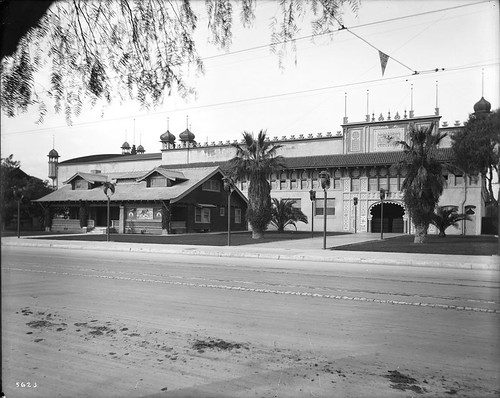
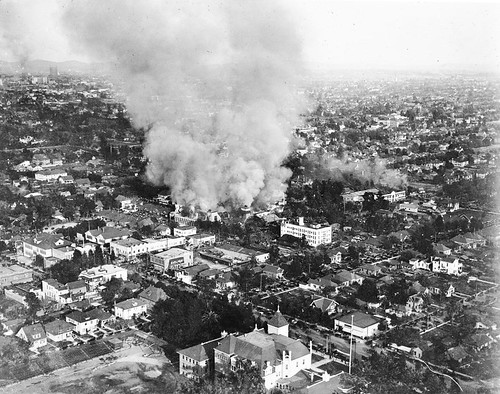

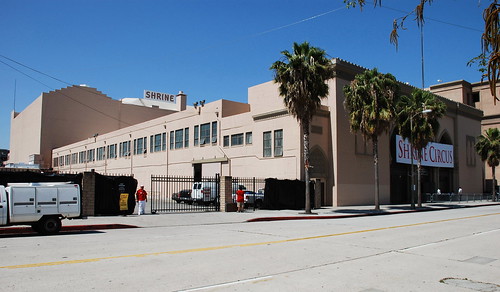
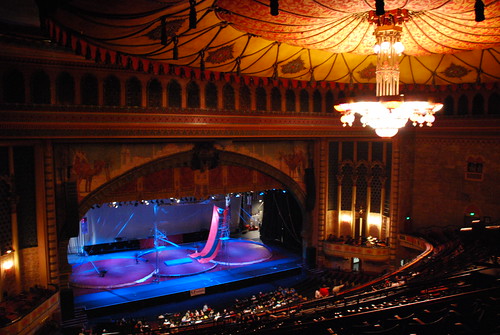
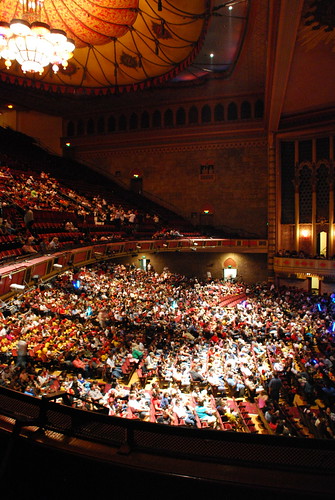
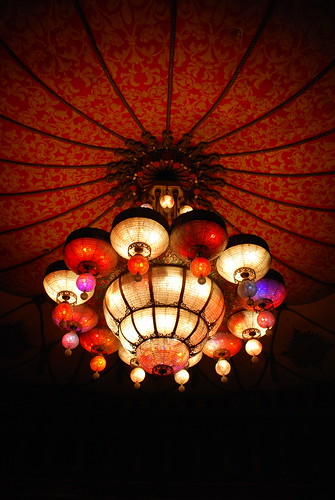
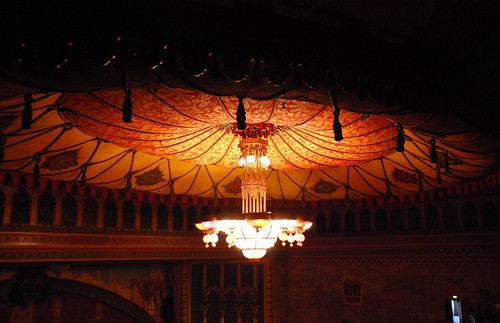
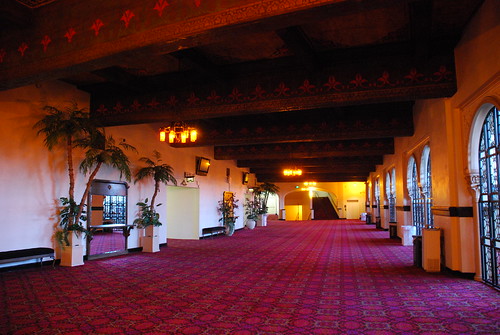
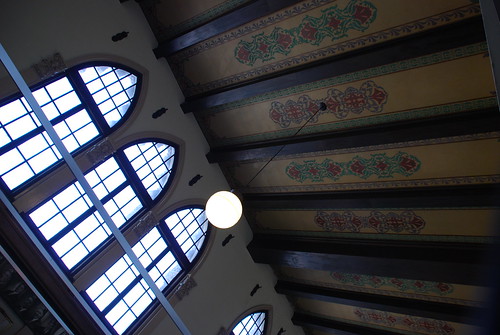
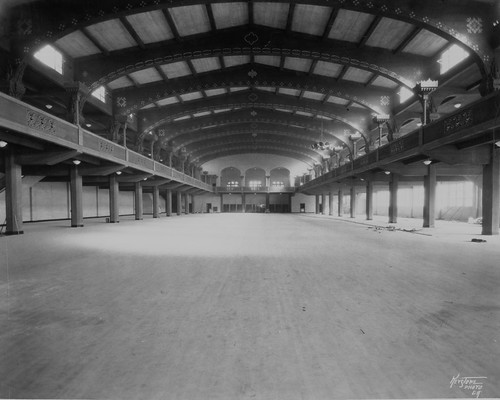

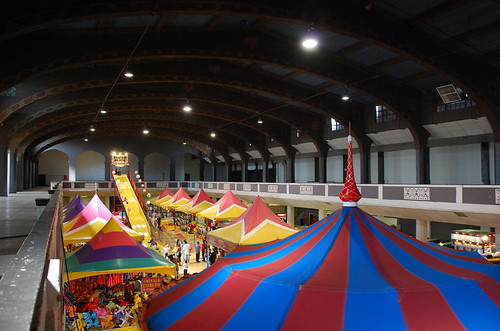
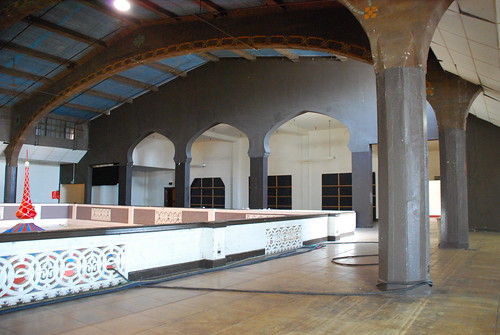
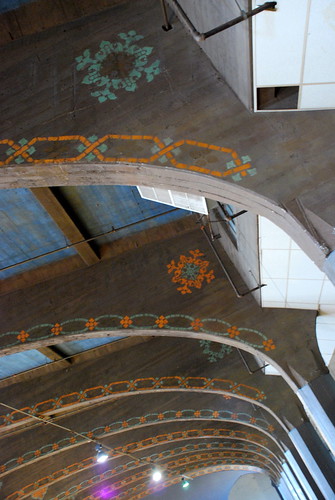
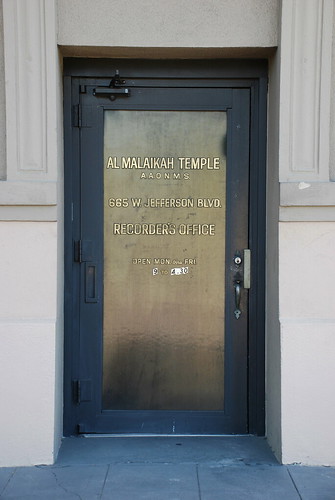
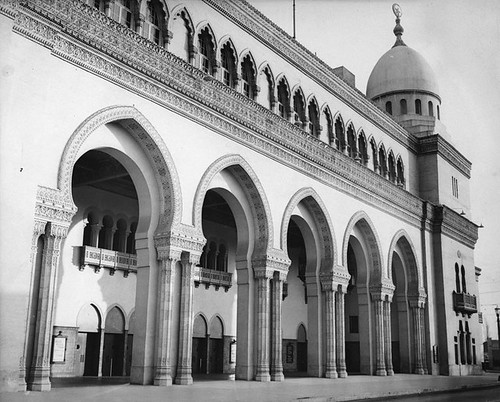
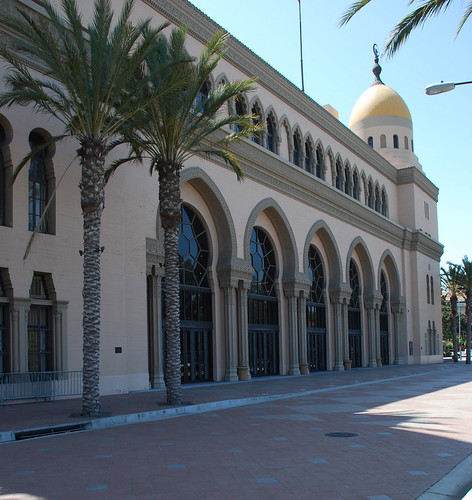
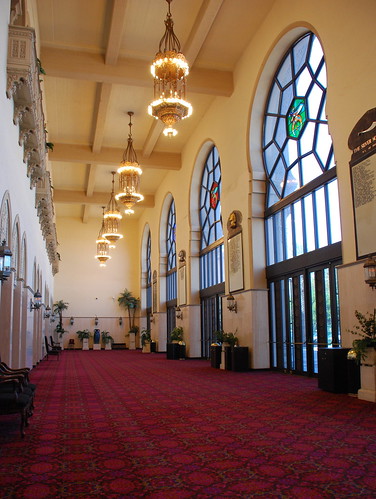
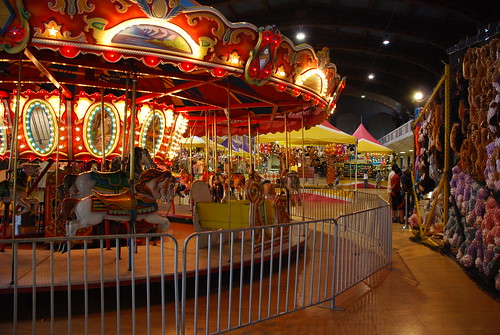
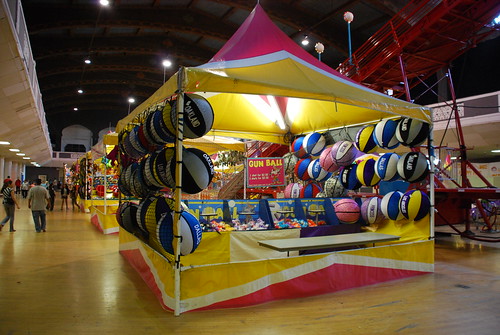

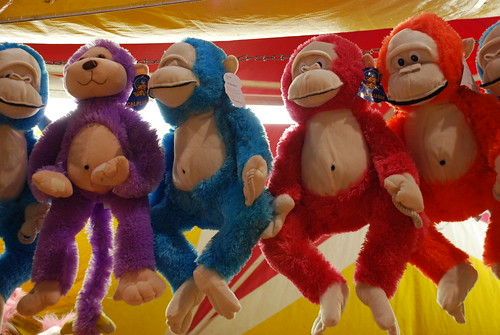
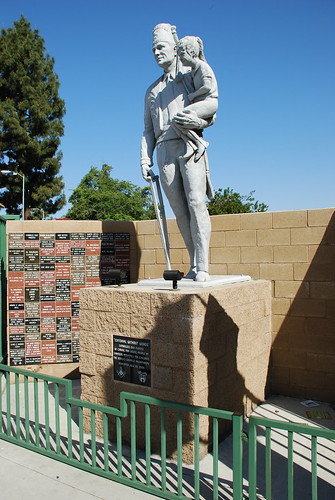
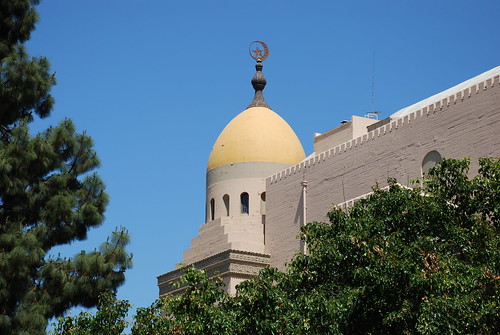
Great Post as usual. Now I know what the Arabic translation of Al Malaikah is. My grandfather was a Al Malaikah member and my mother was chosen as a Shriner princess. She rode atop one of their floats back in the 50's. I've got the pictures hidden away somewhere. The glass work is stunning.
ReplyDeleteHey, Palm Axis. Your grandfather was in good company. Other Al Malaikah Shriners included Gene Autry, John Wayne, Red Skelton, Clark Gable, Bud Abbott, Jimmy Doolittle, Ernest Borgnine, Roy Rogers, and Imperial Potentate Harold Lloyd.
ReplyDeleteIs there any chance that you can post a photo of the Shrine Auditorium's Möller organ console? That instrument is one of the sweetest sounding organs ever built. I used to go to Kathryn Kuhlman's services at the Shrine in the early 70s just to hear that fantastic sound.
ReplyDeletedo you happen to have links to the la times articles you used? because i need to find historical documents on the shrine auditorium
ReplyDeleteSorry, anonymous. Those older articles don't have stand-alone URLs.
ReplyDelete